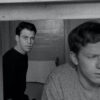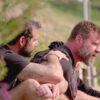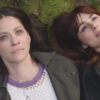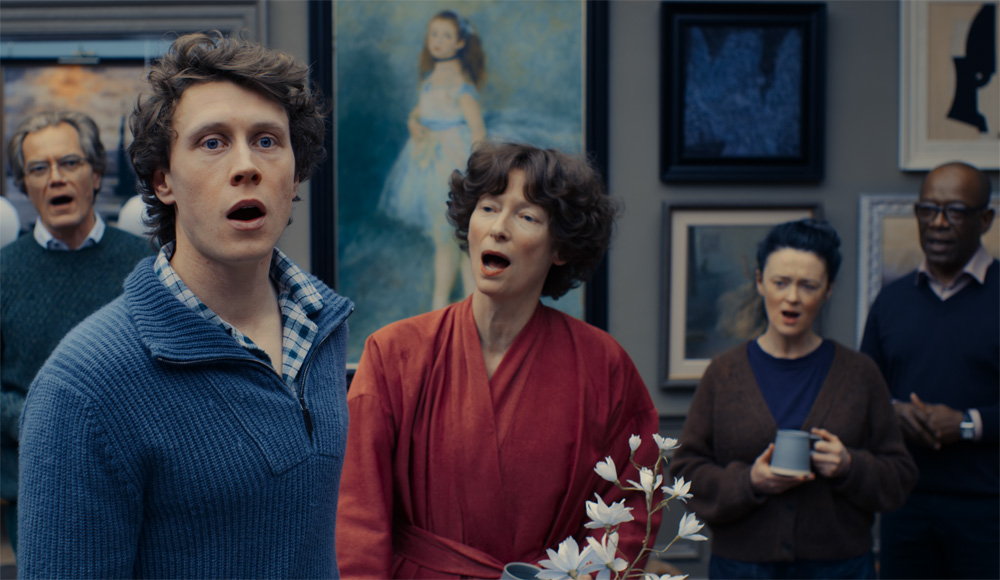As he often would in a time of despair, Joshua Oppenheimer tucked into one of his favorite musicals “The Umbrellas of Cherbourg” a few years back. The reason was a mix of the personal and professional when he realized he couldn’t move forward with a third film in the trilogy covering the genocide in Indonesia that he had planned after making “The Act of Killing” and “The Look of Silence,” generating enough attention with the groundbreaking work to make it unsafe for him to ever set foot in the country again. Of course, Oppenheimer’s appreciation for musicals could be seen even then when he came up with the novel approach of having songs sung by the perpetrators of mass killings under the Suharto regime to expose their unconscious memories of what they did, a subject so rarely discussed in the country that people whose families were decimated could be living next door to their killers in the relative peace in the present, and you might think he sought comfort in Jacques Demy’s candy-colored romance, but the filmmaker found something besides that as the lovers played by Catherine Deneuve and Nino Castelnuovo burst into ballads, their emotions too big for what could be expressed with words alone.
Remarkably, Oppenheimer has distinguished himself once again with his use of music in his narrative feature debut “The End” from any other filmmaker that’s come before, including himself in telling the story of a family that has moved underground as the world above has collapsed into chaos. How much they may be responsible is a growing concern as their adult son (George McKay) is spurred on to learn more about his mother (Tilda Swinton) and father (Michael Shannon) when an unexpected visitor (Moses Ingram) finds her way into the salt mines where the family has lived in comfortable seclusion with a few necessary servants (Lennie James, Tim McInnerny and Bronagh Gallagher) and fine art lining the walls and fresh flowers around the room to provide some atmosphere. Although the father has tasked his son with help to draft his autobiography to pass the time, it becomes clear more than a few details have been left out and the young woman’s arrival at their home without anywhere else to go raises less questions about where she’s been than how the family could remain intact and so well-prepared for a crisis induced by climate change and a subsequent scramble for natural resources.
While people above may wonder where their next meal is coming from, the family in “The End” begins to be eaten up by their privilege, breaking into song when the reality of their situation becomes unbearable and that feeling that words are unsatisfactory is shared with other musicals, but with Oppenheimer and composer Joshua Schmidt having their cast struggle to find the right notes with which to engage with one another as deceit runs through the house and even within their own bones regarding how much responsibility they have for their circumstances. Both the resulting music and the elegance that “The End” generally unfolds with beautifully lensed, long fluid takes yields an unambiguously pleasing veneer on a tale you feel in the pit of your stomach as a result, reminiscent of the perfectly plated savagery of Luis Bunuel’s “The Discreet Charm of the Bourgeoisie” where unfathomable wealth can insulate people to the point of losing touch with their humanity and Oppenheimer may arrive at grim conclusions, but taking notice in the first place offers a glimmer of hope.
After “The End” swept through the fall festival circuit with stops at Telluride, Venice, Toronto and San Sebastián, the film is starting to make its way into theaters this week and in the midst of touring the country, Oppenheimer graciously took a moment to talk about how he incorporated the rigorous approach he took to nonfiction to make a surreal fiction rooted in authenticity, creating the film’s main set and the good he sees in a world that looks more dire by the day.
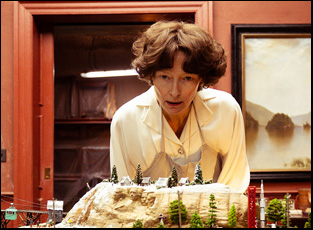
The set grew from the questions that I had when I visited that bunker. The bunker was a cave and at that point, they hadn’t finished it yet. It was a former Soviet command bunker built in a mountain, so I could really project whatever image I could dream up of the finished bunker onto these rock walls because there was nothing there yet. They were planning many of the same features you have in “The End,” the art vault, the pool and so on, but I found where really the vision of the house came from were these questions that haunted me as we walked around the bunker, which was how would you cope with your guilt for the catastrophe from which you’re fleeing? How would you cope with your remorse for leaving your loved ones behind? How would you raise a new generation as a blank canvas onto which you could paint your own version of your lives? And what happened to the world as a means of reassuring yourself, as a means of easing your regrets, as a means of justifying your actions?
Essentially, I understood that whatever would come out of this — which initially I thought might be a documentary — would be a film about denial and delusion. And as we started turning that into songs, we realized the principle that gets them singing in this film is self-deception. It’s crises of doubt. Crises as the stories they’re telling themselves that get them out of bed in the morning and allow them to cope with the situation start to fray and unravel. They desperately would reach for new melodies and new bits of music to cobble together a kind of life raft of luminously beautiful melodic lies so that they don’t drown in the abyss of their own making. That realization meant that as they sing them, the songs would follow them. The songs would be journeys of self-deception for the characters. So we realized that if we could be introduced to the melodies through carefully thought-through reprise structures so that when they start singing, we’re humming along with them, we should be able to be able to identify with them by just singing along with them as they convince themselves that they’re living the best possible life they could live. As they use the songs to forget that they’re in a bunker, we too should forget that we’re in a bunker.
That led to some insights about the sets and the home, namely that even though there would be no windows, it should not feel claustrophobic because otherwise you’d be constantly aware that you’re penned in. That led us to have these light wells inspired by skylights in Versailles and in the White House where you’d have simulated daylight streaming in and diffused among the rooms. That led us to the idea that there should be exteriors, so we came to this ant colony model of the bunker where we would fashion some caverns into these classically appointed manor house-style rooms that would just open up into the emptiness, the rawness of the salt mine. Also, we would use the mother’s art collection as windows, so you would be looking through these romantic landscape paintings to a lost nature that never existed because what we’re seeing on the walls are the stories they’re telling themselves about the past, like the narratives they’re spinning in song.
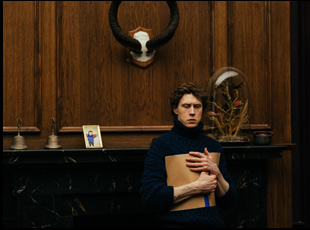
Because these characters are haunted by their pasts and it’s a non-familiar world in which they live together, rehearsal was crucial, so we had a month where the [actors] could understand after a conflict, how would they find harmony again? Because they would need harmony to live for 25 years in such a place together. [We’d talk about] what are the secrets that they’re all keeping from the son? Because apart from the son, all of the older characters have a pact of silence and they all know each other’s secrets that they all keep hidden from the son and each of them use in different ways as a kind of canvas onto which they can paint their idealized version of themselves.
So rehearsal was crucial, but then when I make a documentary, I’m always looking for authenticity, which sounds like a cliche, but what I mean by that is I’m looking for moments that I instantly recognize as true because they’re not what I expected. In a certain sense, I quickly realized that with actors who would have to bring characters to life whom I had richly envisioned as I wrote them, they would have to make these characters true to them and emerge organically in the moment from their inner lives. That meant that rather than hoping for them to flesh out something I’d already imagined, I could lean back on my skills as a documentarian and create a space in these long takes through which we shot the film for them to surprise me and bring me those moments of authenticity.
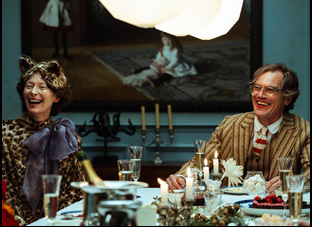
I could say so many things about that for everyone, but for example, Tilda is such a unique human being that she has instincts that are so surprising and so fresh and so contra to what one might expect. There’s a beautiful moment where she’s seated on the back of a pickup truck after a particularly tense moment and suddenly the ventilation tube for the mine inflates. In the script and in our discussions [beforehand], this was absolutely meant to be a moment of where she’s startled and horrified, but something much deeper happened [in the scene we shot] and it’s subtle. I remember asking her afterwards, “What were you working with there? Because that was extraordinary.” And she said, “I thought this mine is the dead earth breathing and it was a source of comfort.” That was going 180 degrees contra to what I was expecting, but I got something instantly recognizable as true and beautiful.
And George, a year before we started shooting, wanted a workshop with me to start working on the son’s character and we wanted to look at how the son moves. He wanted to know how do I react physically when the lies upon which I’ve been raised are punctured by anything? It could be just a stray comment or from the doctor or from my dad or a fact or an object that I find. And he started working out this whole little vocabulary of winces and tiny ticks when the skein of lies on which he subsists and on which he skates cracks. He internalized that so deeply that when that would happen in the scene, at its turning point or as we were building to that, a tiny little muscle under his eye would start to twitch — and he’s not controlling that consciously. He’s just so deep in the character that that little tick would start firing. It was astonishing. And all that actors did that. The level of commitment from this cast [was extraordinary] and this is not like a troupe of committed actors. This is like a doomsday cult members who signed up for the rapture. They’re hopeful and they’re lost and they’re frightfully mortal.
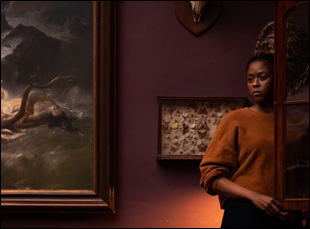
I wrote at least the first draft of the film and the first draft of the songs under the first Trump administration, so the film is right at home in this dangerous moment we’re living in. And it feels all the more urgent because I think we as a culture and a society, at least a large minority of us at the very least — and maybe many people who didn’t vote — are realizing that our expectation that somehow things will work out for the best, no matter what we do, was a delusion. I still believe that this is a cautionary tale about the wolf of despair masquerading in the sheep’s clothing of hope and the importance of embracing in contrast to that false hope, the genuine hope of saying, “Look, we have to acknowledge right away the urgency of our problems and marshal all our creativity and come together as a human family to solve those problems.” I still believe that there’s time for that.
And this is still offered by me and the cast and the crew and the producers and the hundreds of people who made this happen as a gesture of genuine hope. I even believe that the humanity we will discover by coming together collectively to solve these problems, the activism we will now need to be ready to embrace up to and including nonviolent civil disobedience, will remind us of our full human potential. I say “remind” because I think we as human beings have done this before. We did it in the civil rights movement. We did it in the struggle against apartheid in South Africa. We’ve done it many times before. But it will remind us and we will rediscover our deepest humanity which lies in the broadest human family and in this dark moment, that is more than a silver lining.
“The End” opens on December 6th in limited release including Los Angeles at the Nuart, where Joshua Oppenheimer will be onhand for Q & As after the 7 pm show on December 5th and 6th, and New York at the Angelika Film Center and Alamo Downtown Brooklyn, where Joshua Oppenheimer will be onhand for a Q & A after the 6 pm show on December 8th.
